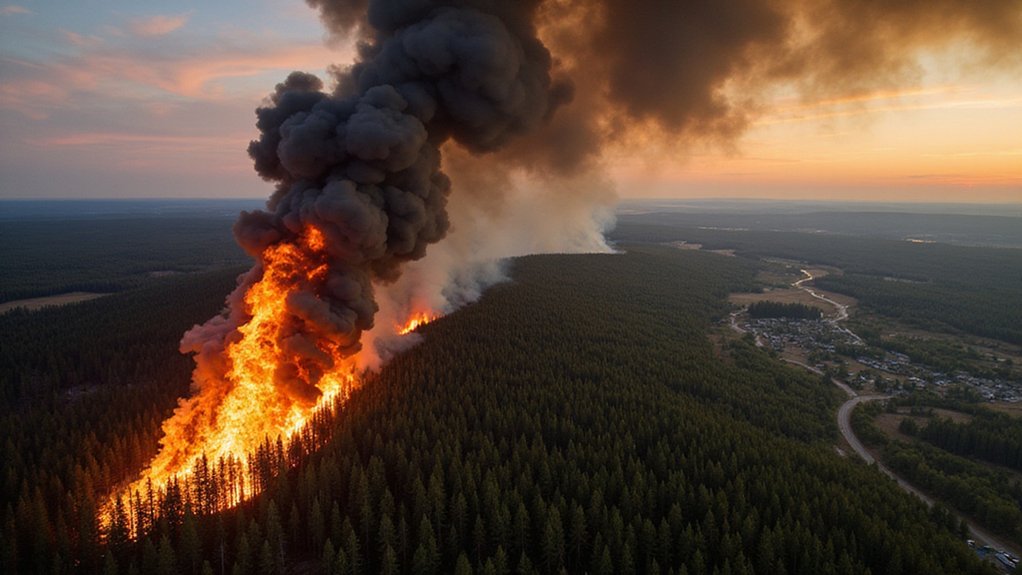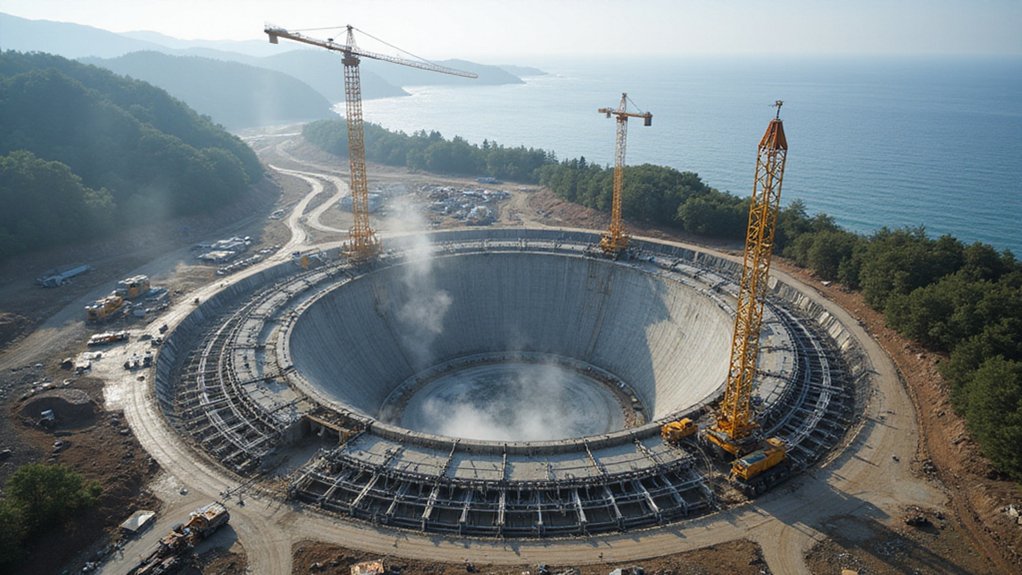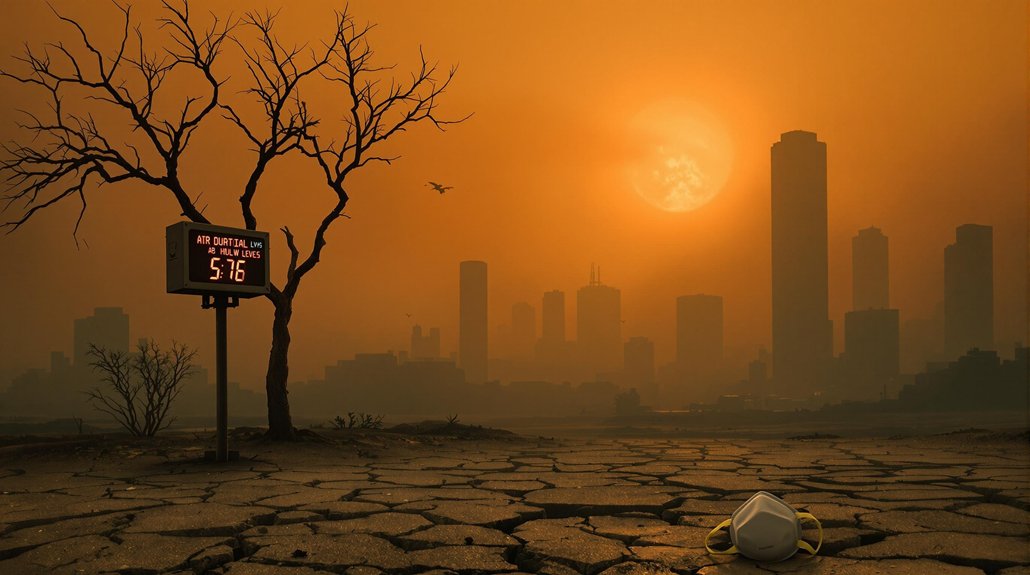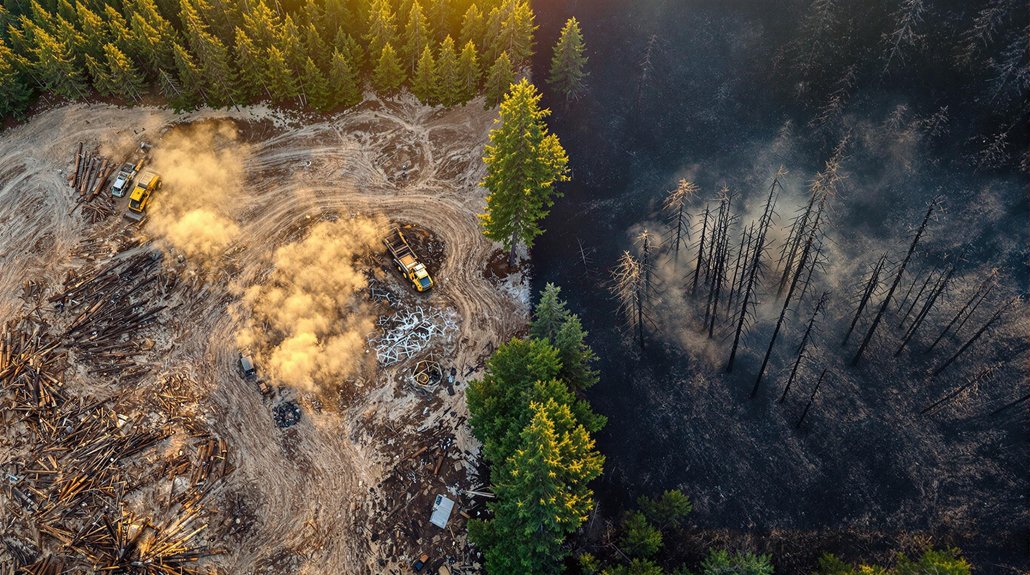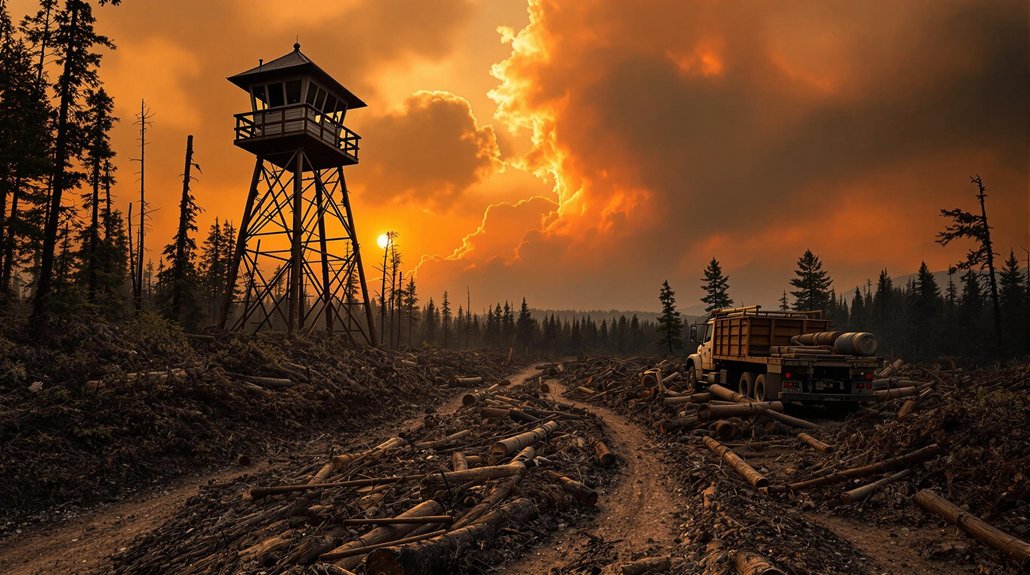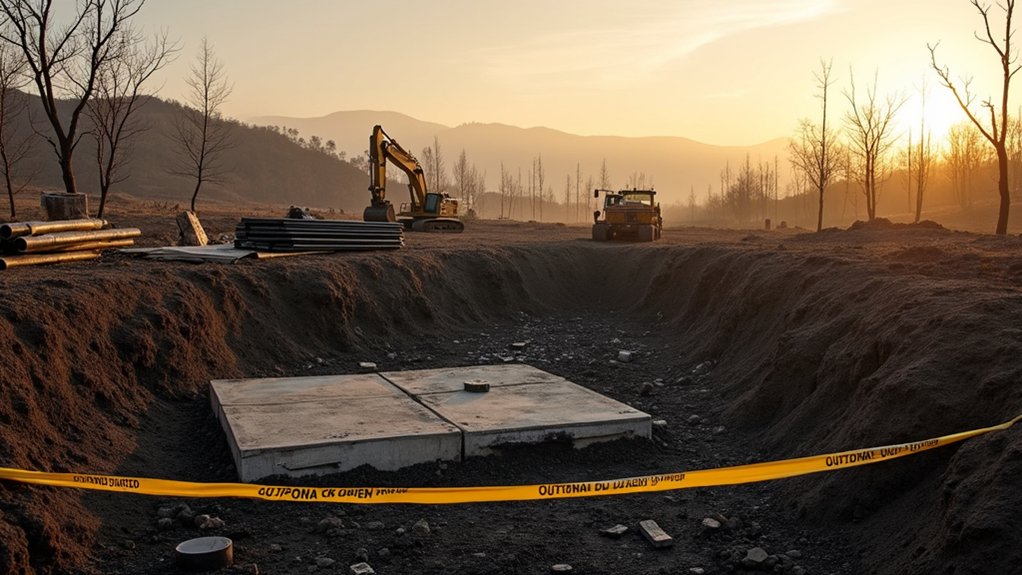While most Canadians were planning their summer vacations, Manitoba burst into flames. Over 17,000 residents are running for their lives, abandoning homes as wildfires tear through the province like never before. The government slapped a state of emergency on the whole province. It’s the worst start to wildfire season on record, and nobody’s celebrating.
Manitoba’s worst wildfire season forces 17,000 to flee as flames devour communities.
The city of Flin Flon? Empty. Completely evacuated. Lynn Lake, Marcel Colomb, Pimicikamak—all First Nations communities forced to flee. Even Pelican Narrows got the boot, along with Creighton just across the Saskatchewan border. These aren’t small disruptions. This is the largest evacuation in living memory for many Manitobans. The shifting winds that pushed flames dangerously close to Flin Flon forced officials to order all 5,000 residents out by midnight.
The numbers are staggering. Twenty-two wildfires are actively burning right now, with more expected because Mother Nature decided hot and dry was this year’s theme. Nearly 200,000 hectares of forest have been torched in just one month. That’s triple the usual five-year average. Manitoba’s already blown past 100 wildfires this season, making it Canada’s wildfire hotspot for 2025. Flames are shooting up over 121 feet high, forcing firefighters to retreat from the inferno.
People are dying. Two residents in Lac du Bonnet didn’t make it out earlier this month. A firefighter got crushed by a falling tree trying to save what’s left. The premier’s scrambling, calling in the military because local resources can’t handle this mess. Federal aircraft are swooping into remote northern communities, pulling people out before the flames arrive.
Emergency shelters are overflowing with displaced families. Over 1,000 residents from Lynn Lake and Marcel Colomb First Nation had already packed up and left before the province even declared the emergency. Smart move. Creighton ordered 1,200 residents to evacuate when flames started threatening the only road out. The crisis highlights the importance of renewable electricity sources in reducing climate impacts that contribute to these catastrophic fire seasons.
This isn’t just bad luck. Climate change is turning Canada’s forests into tinderboxes. Remember 2023? Worst wildfire season in Canadian history. Now 2025’s trying to break that record. Out of 134 active wildfires nationwide, half are completely out of control. British Columbia, Alberta, Saskatchewan, Ontario—they’re all burning too.
The air’s toxic. Resources are stretched thin. And summer just started.
References
- https://phys.org/news/2025-05-thousands-evacuate-canada-manitoba-province.html
- https://www.the-independent.com/climate-change/news/canada-wildfires-manitoba-state-of-emergency-evacuations-b2759753.html
- https://www.cbc.ca/news/canada/manitoba/first-nations-wildfire-evacuation-1.7546519
- https://www.gov.mb.ca/conservation_fire/Fire-Maps/fireview/fireview.html
- https://www.youtube.com/watch?v=3GSkTuz3M7U
